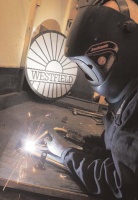Westfield Sportscars, a West Midlands-based vehicle manufacturer, has sold more than 10,000 sports cars worldwide and currently produces more than 400 cars a year for driving enthusiasts.
Now, working in a collaborative research and development project with analysis and design partners Penso Consulting and Delta Motorsport, the company has completed a ’light-weighting’ project with tubing specialist Reynolds Technology, creating a new car chassis and wishbone by replacing much of the traditional mild steel with alloy tubing used in Tour de France bicycles.
The project was part-funded by Advantage West Midlands through its Advantage Niche Vehicle Programme and is managed by CENEX to promote collaborative working and accelerate adoption of new technologies.
The chassis are made using a spaceframe, onto which wishbones and non-structural body panels are then attached. These spaceframes are constructed from tubes - traditionally made of steel - that are placed in a triangulated format to support the loads from the suspension system, engine and driver. A common approach used in low-volume car manufacturing, such spaceframes result in lower tooling costs, as well as allowing companies to quickly make modifications to the design.
Dr Paul Faithfull, technical director of Westfield Sportscars, said that both the new wishbones and chassis are designed to work with the current powertrain and body in the company’s existing sports car range, so their functionality remains the same. But the new design is a far cry from the company’s existing designs.
The design team chose to reduce the weight of the chassis and the wishbone by examining the possibility of using new thin-walled alloy tubing developed by Reynolds in place of the mild steel tubes used previously.
After investigating numerous Reynold steels, the company selected Reynold’s 631 - an air-hardened steel - which the design team specified for the two main arms of the A frame in the wishbone, as well as at selected points in the chassis identified as points of high stress that might fail through fatigue, such as the wishbone pickup points.
The parts count of the wishbone was reduced from 12 to eight, achieving a 30 per cent weight reduction
Faithfull said that the air-hardened steel wishbones are no more expensive than traditional tubular steel designs when fitted to a vehicle, when all manufacturing and assembly costs are taken into account, even though the tubing used itself is more expensive.
That is in part, he added, due to the fact that the designers were able to reduce the parts count of the new wishbone from 12 separate parts down to eight, while achieving a 30 per cent reduction in weight. In addition, the assembly time taken to attach the wishbone joint is reduced through the use of a modern press fit item as opposed to a bolted-joint assembly.

However, Faithfull admits that the cost to produce the new chassis is six per cent higher than its traditional tubular steel counterpart. Although he notes that this figure should be considered in light of the benefits that the chassis provides: it is 15 per cent lighter in weight and 15 per cent stiffer. Not only that, crash simulations validated by real-world tests have demonstrated that the chassis collapses in a more progressive way in a collision than the traditional design.
Faithfull said the company is now considering ways to lower the completed cost. The tubular chassis is panelled, traditionally by drilling and riveting aluminium sheet to the steel spaceframe. But now, the company is looking to adopt bonding of the panels, which reduces assembly time, as well as maintaining the integrity of the structure more effectively.
Having achieved a reduction in weight and an improvement in crash performance, Westfield is keen to explore how it might develop an even lighter chassis using higher-performance materials for customers that might be prepared to pay a premium for an even lighter-weight chassis.
The key facts to take away from this article
- The new car chassis and wishbone design utilises thin-walled alloy tubing
- An air-hardened steel was specified for points of high stress
- The chassis is 15 per cent lighter in weight and 15 per cent stiffer
- The company is looking to lower completed costs and reduce assembly time


JLR teams with Allye Energy on portable battery storage
This illustrates the lengths required to operate electric vehicles in some circumstances. It is just as well few electric Range Rovers will go off...